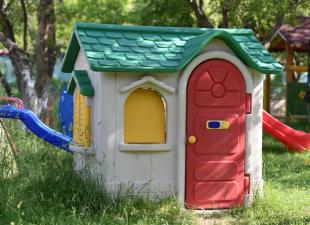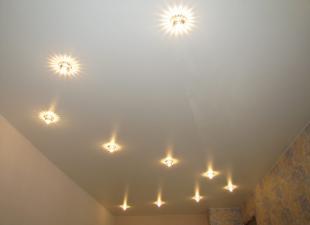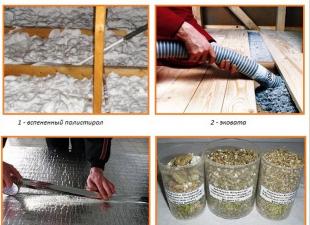The water leakage sensor is the only obstacle on the way of the most common "communal" trouble - a "local flood" provoked by the breakdown of plumbing equipment. Moreover, the sensor itself is not a guarantee of the serviceability of fittings, fittings, taps and mixers, but, nevertheless, it is able to protect against the destructive consequences of leaks provoked by depressurization of joints and housings of household plumbing.
And in this article we will consider various systems for protecting housing from leaks, delving into both the configuration of such devices and the essence of their work. Having studied this material, you can install a typical leakage protection system, collecting it from literally "improvised" means.
The heart of any sensor is a simple pair of electrodes that "close" in the event of contact with water. That is, the principle of operation of the entire system is built on the closure of the electrical circuit, which is provoked by the water itself.

The very fact of a "short circuit" is recorded by a special device - a controller, which picks up signals from sensors. And after reading and decoding the pulse, the controller sends its own signal to the shut-off valve that closes the pipeline.
|
|
In this case, the “sensor-controller-valve” chain can exchange signals either by wire or remotely using radio signals. However, in both cases, the water supply or heating system will be shut off in just 10-15 seconds. And in such a short time, nothing terrible will happen, as the manufacturers of the sensors assure.
However, such "performance" is inherent only in industrial models. After all, making a water leakage sensor with our own hands, we cannot calibrate the "reaction" of the device: sensitive specimens "beat" with current, and safe "crafts" do not respond to flooding at the proper speed.
Therefore, you should not save money when choosing accessories for a leakage prevention system. Remember: no sensor is as expensive as your (and possibly your neighbor's) repair that will have to be done after a "local flood".
A typical leakage protection system, for example, such as Aquastoro or Gidrolock, consists of the following elements:

- Wired or remote sensors (and it is assumed that a water leakage sensor is installed in the floor or baseboards).
- Ball valves with an electric drive (the valve is connected to the shaft of the electric motor by a pair of bevel gears or a coupling).
- Controller, made in the form of a separate unit or board, integrated into the smart home control system.
Moreover, the sensors can be volatile, like in the cheap Neptune, or completely autonomous, like in the Gidrolock system, which is equipped with devices with a 10-year autonomy. But in any case, they operate from a low-voltage source of electricity, which eliminates the risk of electric shock.
A typical location for a sensor is under a bathtub or sink. The area near the "facade" of the washing machine or dishwasher, the area near the shower tray or the section of the plinth under the radiator is also very popular.
Ball valves are typically ½ to 1 in. Orifice. Indeed, in domestic heating systems or water pipes, pipes of a larger diameter are rarely found. Moreover, the cranes are always connected to the mains, but they can also operate on a battery. The typical location of the controlled tap is the junction between the outlet from the central water supply and the first squeegee of the horizontal section of the domestic water supply. That is, the controlled tap is mounted behind the mounting valve, before the water meter.

In addition, in autonomous water supply systems, the role of a "controlled tap" can be played by the well pump itself, which is turned off in sprout after reading and processing the signal from the sensor. But even in this case, it is not necessary to neglect the controlled ball valve. Indeed, water from a hydraulic accumulator can pour into a leaking water supply system.
Well, the controller is a typical control unit designed for one logical operation and deciding whether to shut off the water supply system based on a sensor signal. At the same time, he can inform everyone around about the fact of a leak with the help of sound and color alarms.

A typical configuration assuming the use of only three elements in the system - a sensor (or sensors), a controller and a controlled valve - also assumes a standard installation procedure.
Implemented with the following operations:
- Sensor (or sensors) settings.
- Mount the controlled valve.
- Connecting and testing the controller.
And if you want to understand the process of installing a leakage protection system, then you will have to study all three stages in more detail.
Installing sensors
Here you can use two installation schemes: outdoor and indoor. Moreover, manufacturers recommend the second (internal) option.

The first scheme assumes that the box with the sensor will be installed directly on the floor, with the electrodes facing down. The fixation of the device body is carried out with construction glue. In case of a breakthrough, water will flow under the sensor and the controller will "turn off" the valve. Of course, such a scheme is not perfect (false alarms are possible), but its implementation is possible even if the installation of plumbing equipment and flooring is completed.
The second scheme involves the installation of the sensor under the floor covering with the output of the electrodes to the surface (they rise by 3-4 millimeters, which excludes triggering during wet cleaning). Therefore, the “internal” installation of the sensor can be carried out prior to the installation of the floor covering. At the same time, the connecting wires are placed in a corrugated pipe, "recessed" into the tie.
Valve installation

The valve is installed very simply - its nipple or branch pipe is screwed (or screwed) into the end (or squeeze) of the assembly tap or side outlet of the central water supply. After that, the joint is tightened with a lock nut screwed onto the squeegee or nipple before the valve is installed.
After that, a separate line from the controller junction box is connected to the installation point, which supplies the "power plant" of the shut-off unit. Moreover, in the "sleep" mode, the controlled valve consumes no more than 3 watts, and in the active mode - no more than 12 watts.
Controller connection

The installation of the controller begins with the installation of the housing, which is mounted on the hay, near the shut-off valve. The body can be integrated into a niche or hung on a bracket.
Further from the body, at least two grooves are "beaten" through which wires will be laid to the valve and the sensor. For a wireless connection, you can skip this step. Therefore, expensive sensors and controllers that exchange data using radio signals are mounted faster than wired ones.
The next stage is the assembly of the device. A controller is mounted in the case, to which wires from sensors and a controlled valve are fed.
The device will report the fact of successful assembly after self-diagnosis - a green indicator on the front panel will light up. Well, if water is poured onto the sensor, the indicator will change its color to red, and the controller will "close" the valve. Now you can turn on the feed only from the controller panel by pressing the corresponding button.
 parlini.ru Repair of an apartment, a summer residence and a house.
parlini.ru Repair of an apartment, a summer residence and a house.


